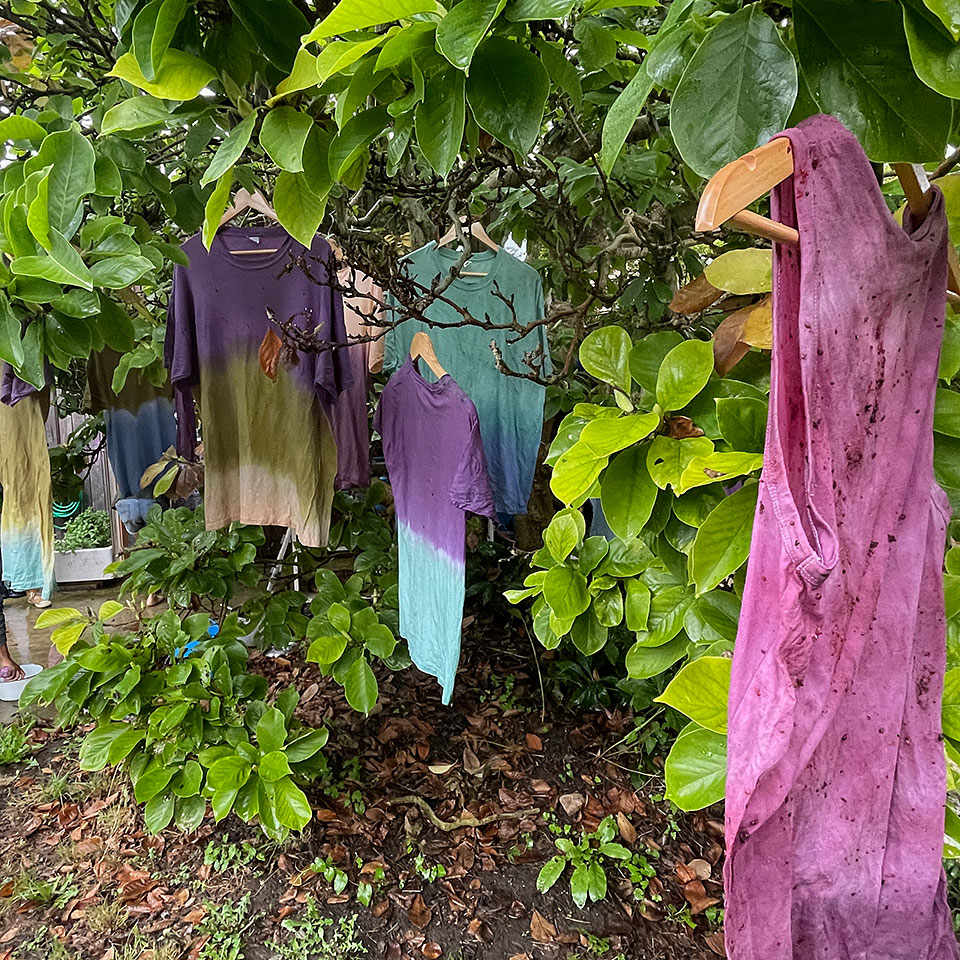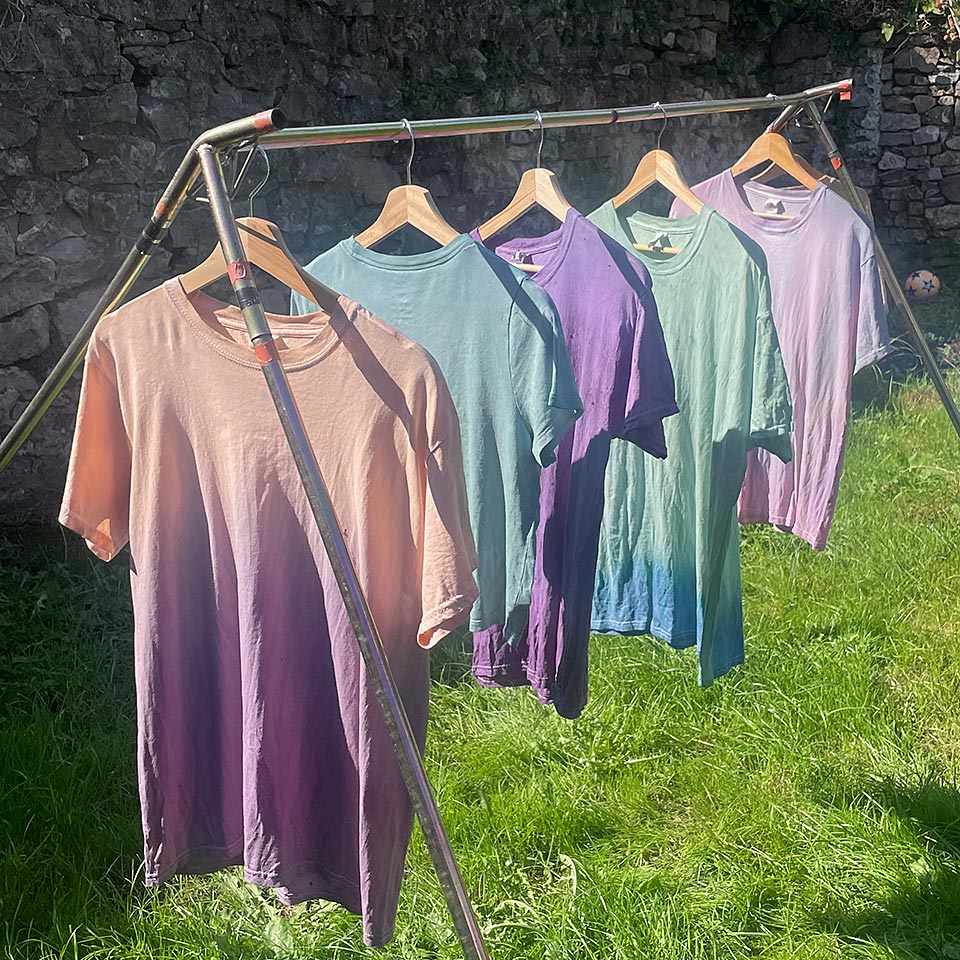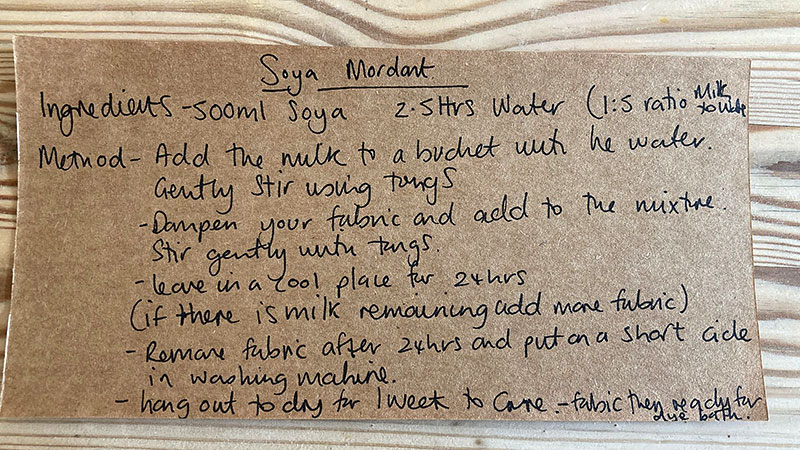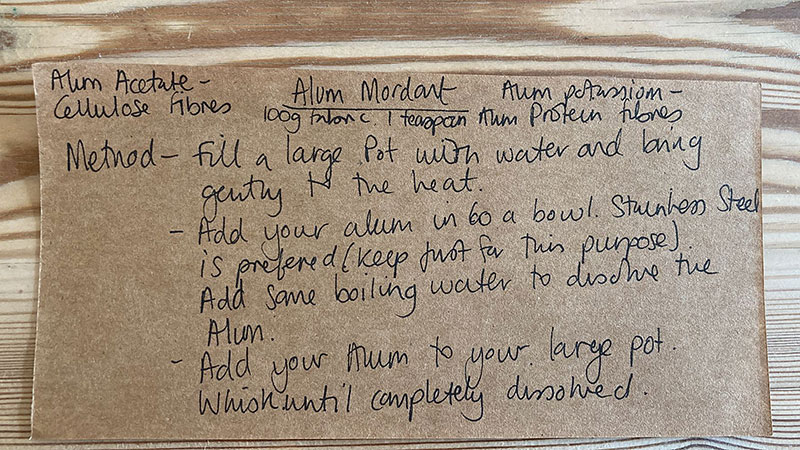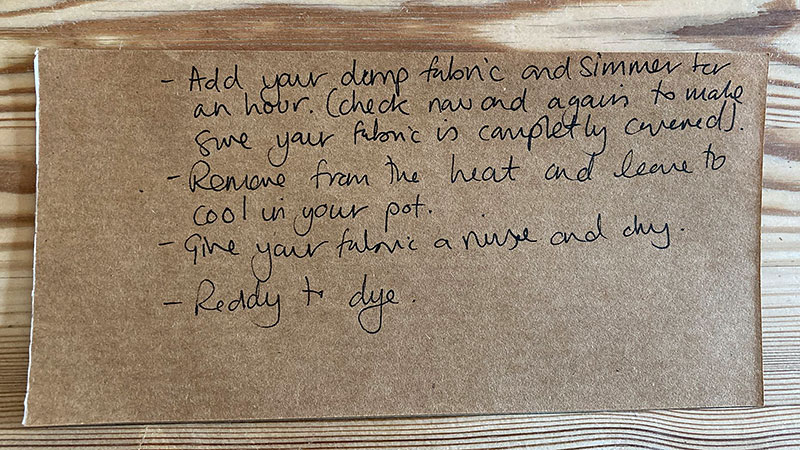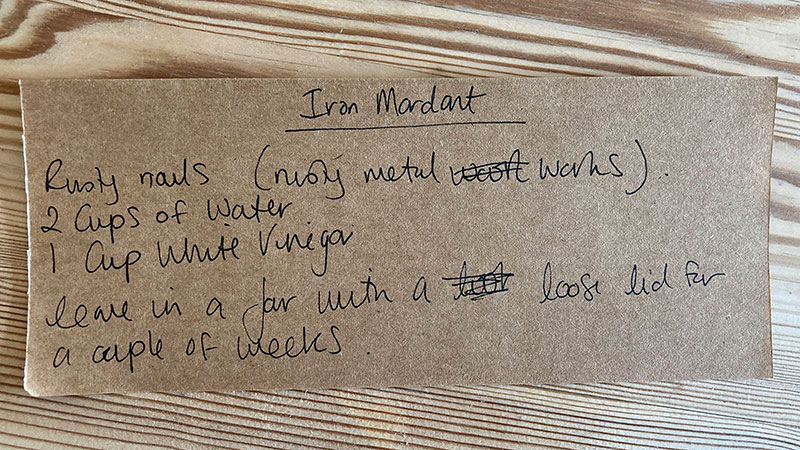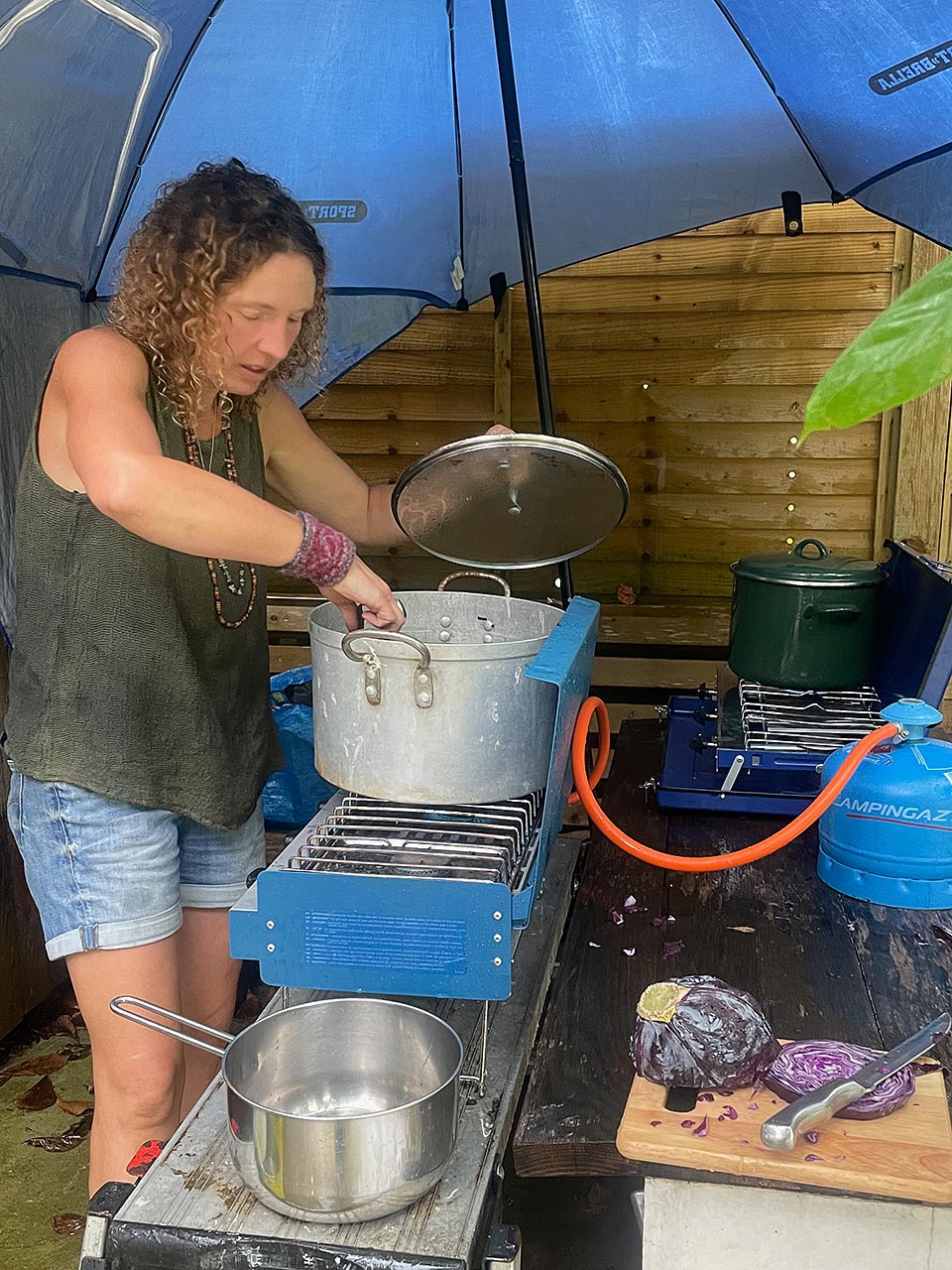
On a very rainy Sunday at the end of summer, we gathered a jolly bunch of friends at our house for an afternoon of exploring natural dyeing.
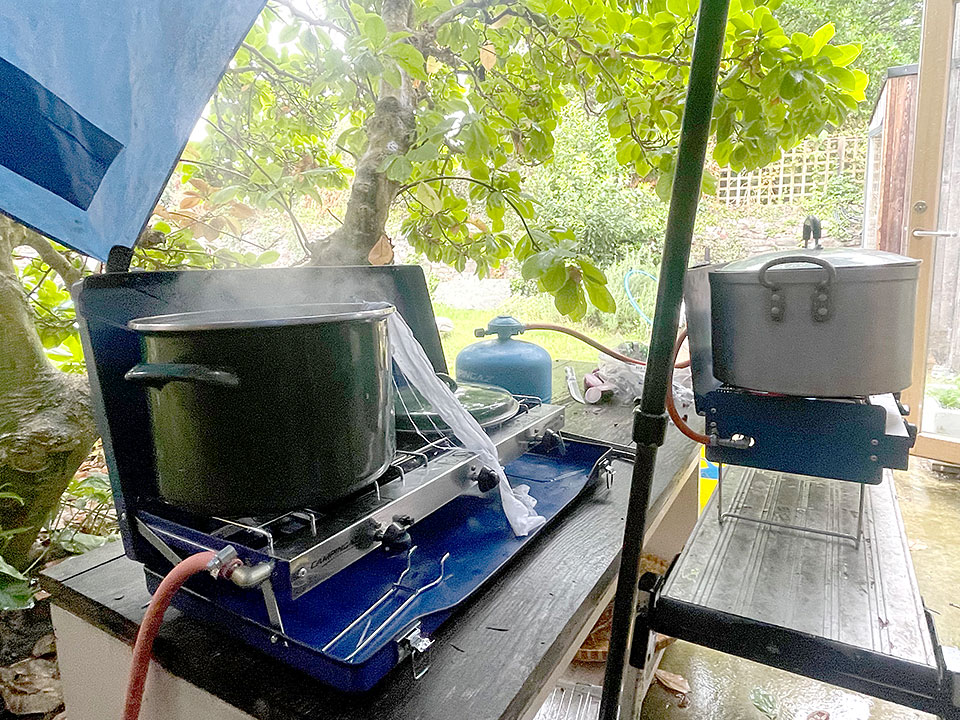
My purpose for doing this is to help me to understand how patterns can be made on fabric without printing. I am very much at the start of this investigation. Starting to understand the processes involved in dyeing fabrics was my jump off point.
Gemma Jones is a family friend, and turns out a long time practicioner of natural dyeing. Heralding from Carmarthenshire in Wales, and now living in Sommerset, Gemma very often has a foot in the seasonal "fruits" available and what you can do with them. And it turns out dyeing things is Gemma's constant practice and study.
Gemma was kind enough to bring over a lot of kit for boiling sources to extract a colour, and bowls a pleanty for us to use to soak or dip our fabrics.
Most importantly, Gemma brought her knowledge and understanding of this fairly variable practice.
Part of my aim for natural dyeing is to be able to create controlled colour change of fabric, and to have the colour set so that they are not leaking or altering their colour too much over time. So for me I'm coming towards this hoping for some level of control.
Through the early research of methods, I was (obviously) confronted by lots of terms and stages I knew nothing about 'mordant', 'Alum', 'Ph', 'Alkaline', 'dye bath' etc. And to confound this lack of knowledge, it seems that there can be endless fluid variables in what outcomes can be expected, due to many endless factors. For example, Gemma brough some swatches, including one dyed from onion skins - which had a delecate peachy colour to it. She then dyed another piece of fabric using onion skins from a batch made at our house, and the resulting outcome was an olive green colour. This difference apoarently, is due to the differing ph levels in my water, compared to hers.
So my personal hope for this event, was to start to see via experience (rather than from a book) how you can change the colour of fabrics, and begin to understand the changability of outcomes from the different stages of the process. To start understanding what parts of the process are 'structural' and what are 'creative'. And start to see some results, so I can see the parameters that are at your disposal for creating different colours.
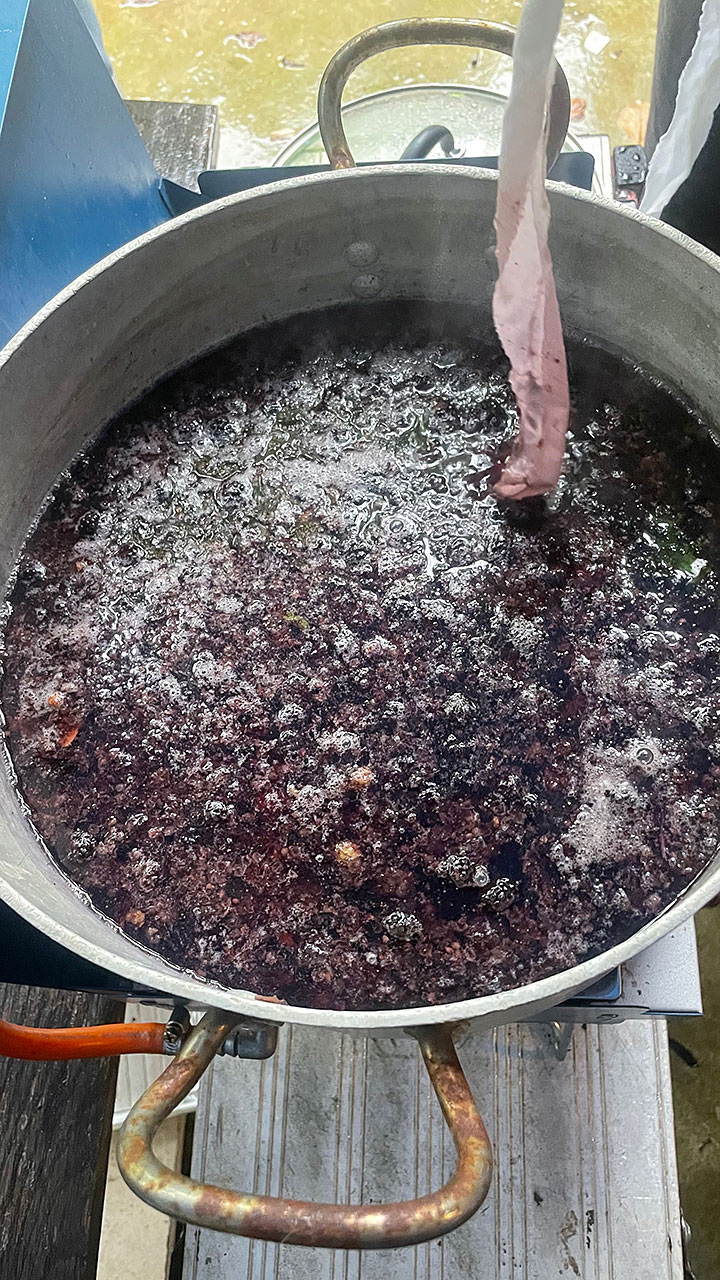
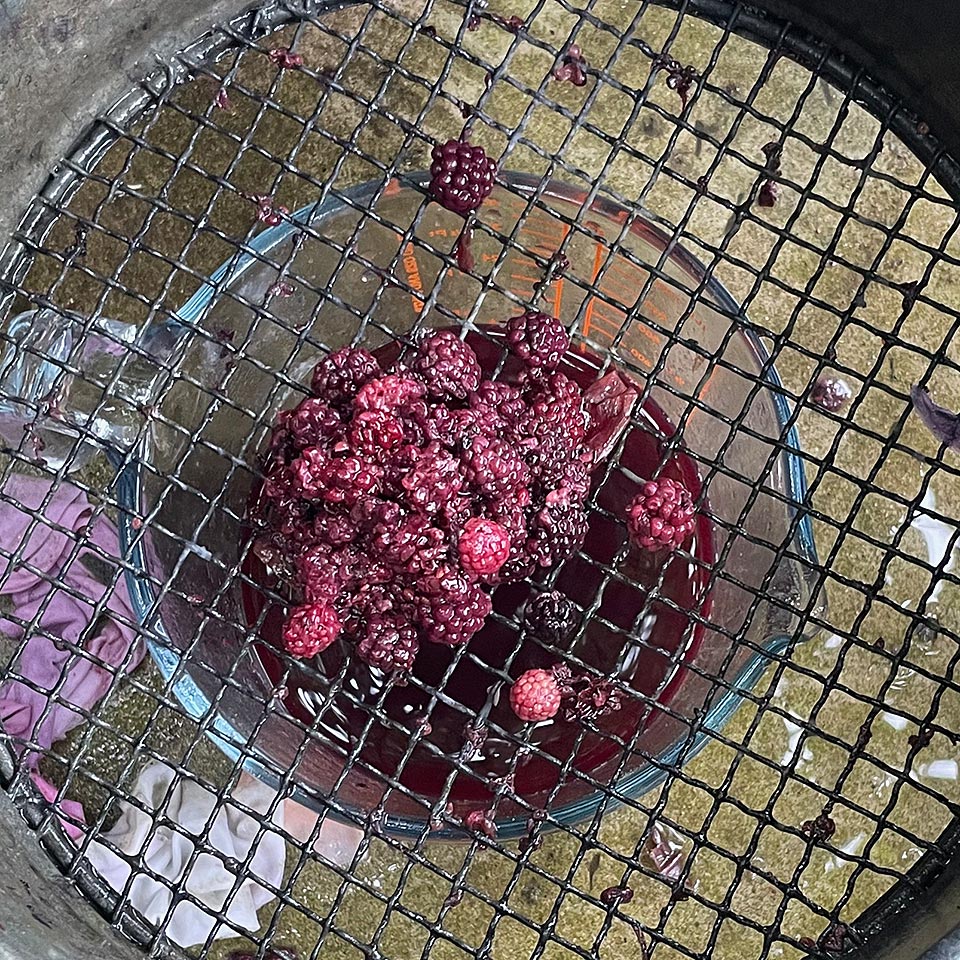
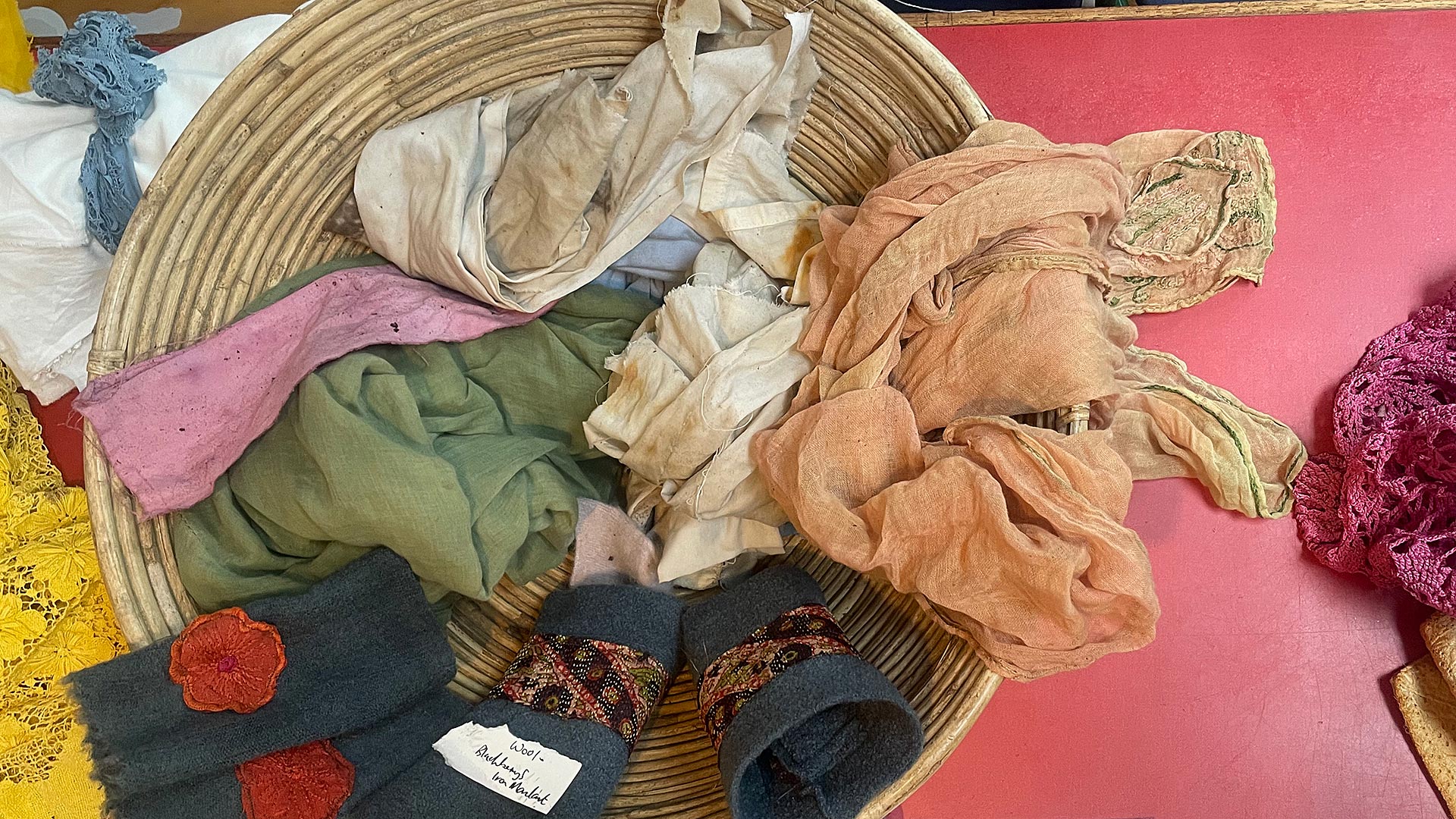
I have started to gain an understanding of the order of processes, the pre-treatment and what that's doing to the fabric, and the preperation of the dye bath, and what that gives you, and the dying of the fabric.
I have a good few jars of dye bath left over that I can play with. So I intend to do this on some fresh t-shirts. This will allow me to revisit the pre-treatment methods, with a bit more patience. And will allow for me to try for a more successful, universal dyeing application.
